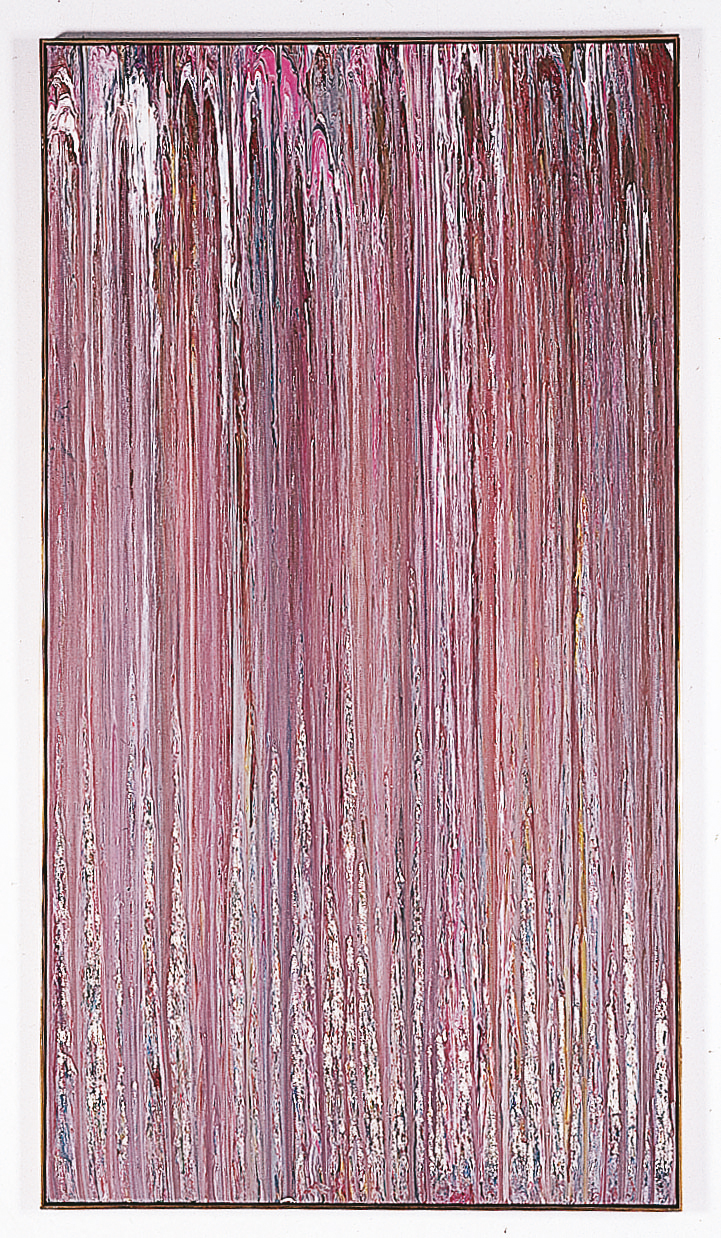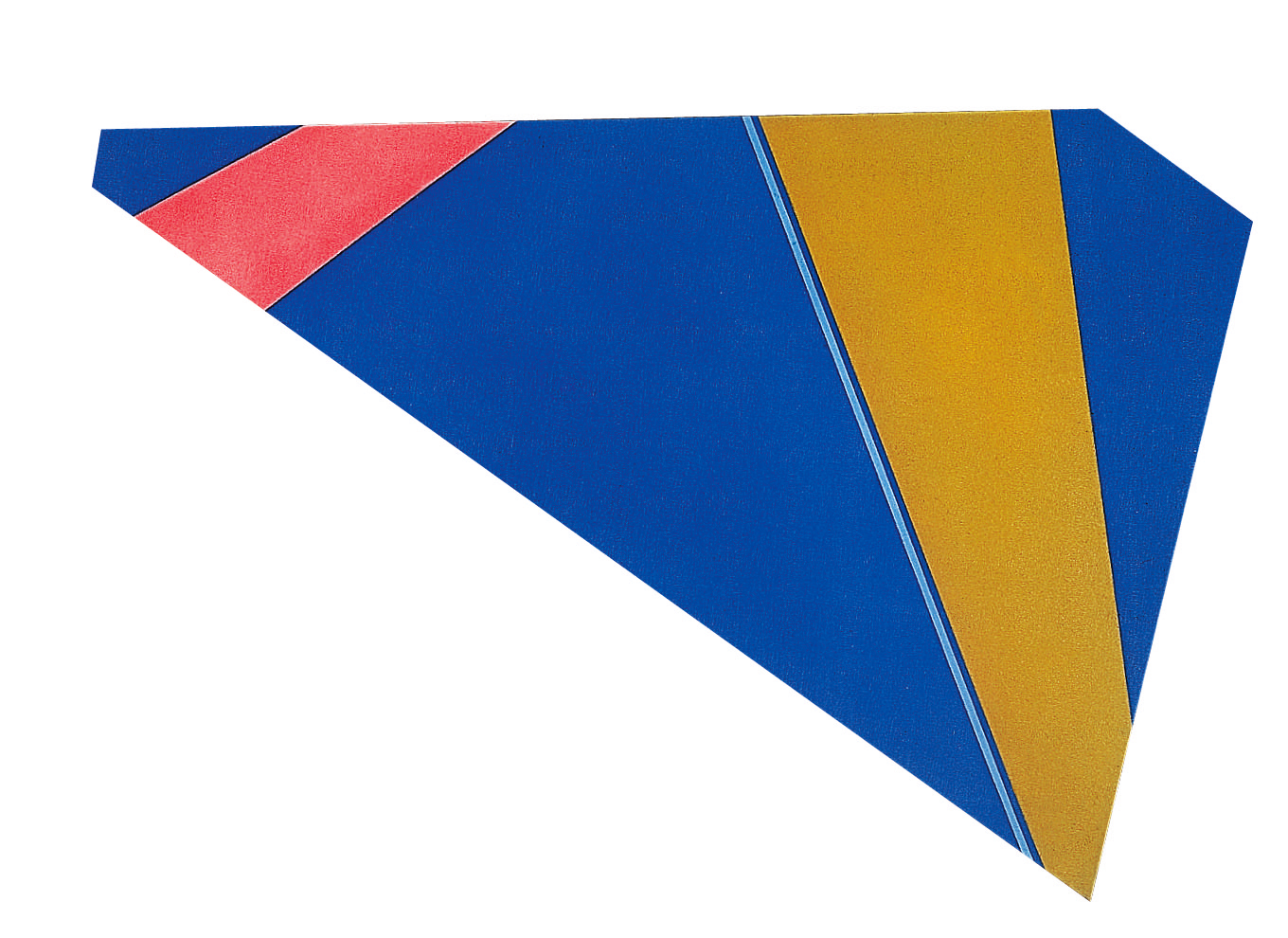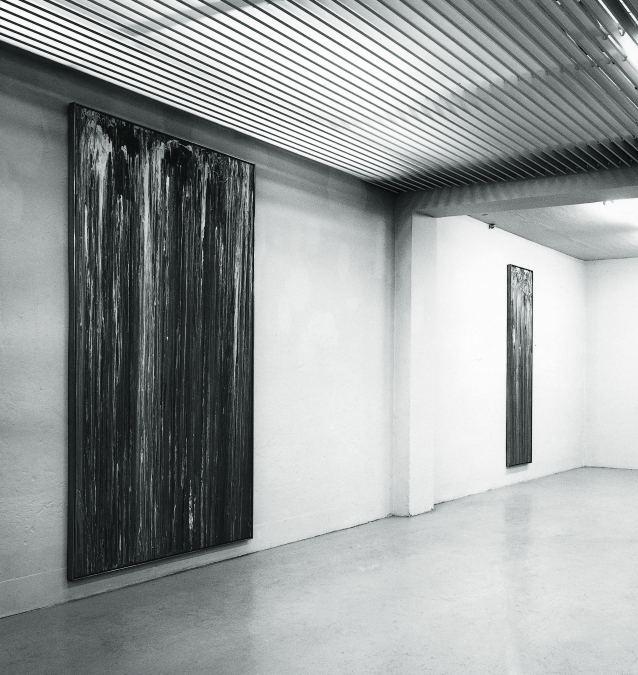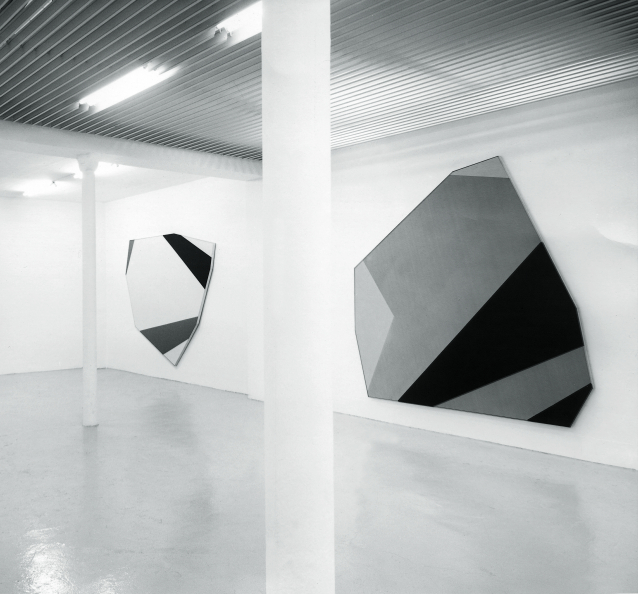History
Larry Poons
February 10 – March 6, 1976
Although only 40, Poons (b. 1939) has already made a name for himself with his “visual” paintings dating from 1963-1964. His early work has been described as one of the most important attempts to strip painting of all extra-optical meaning. […] However, from 1967 onwards, a radical change took place. He worked directly on canvas, transforming uniform backgrounds into hard surfaces composed of paint chips applied with a brush. In the canvases of 1970-1971, the surface acquires a thick, viscous consistency in which impastos and paint accidents produce cracks, fissures and raised curves. At the time, Poons, who was an avowed admirer of Olitsky, worked, like Olitsky, on flat canvases that he unrolled on the floor and then cut out. By pouring layer after layer of thick acrylic paint onto a horizontal plane, he creates a sculptural surface that privileges substance-color over color-color. [The canvases he exhibited in 1973 in New York (Lawrence Rubin Gallery) and those exhibited here in February at Galerie Daniel Templon reveal strongly striated surfaces where the background and the pattern formed by the paint merge. The paint, which appears not on but in the surface, seems to have become the surface itself.

It is through this measured rhythmic pulsation that the gesture can unfold without fear of annulling itself as a sign. The long striations on Poons’ canvases inscribe this cadence that moves the subject in front of the canvas before he begins to paint, and during the process. Oriented vertically in the direction of the highest dimension, Poons’ canvas forces him to dance (Pollock also “danced”). The paint was thick, and the artist, in order to direct the material poured from the pot so that it fell vertically onto the canvas in a continuous, regular stream, had to force himself into a regular movement of the body from top to bottom and bottom to top.
Catherine Francblin, art press, October 1976
Kenneth Nolan
Recent Paintings
October 16 – November 12, 1976
Up to now, symmetry and parallelism have been two constants in Noland’s practice, but in the spring of 1975, he began a series of diamond paintings, starting with the Plaids, in which he exhibited for the first time spaces with straight contours, all diagonal and asymmetrical, never parallel. […] What’s more, Noland does not paint the different spaces in the same way – some are sprayed, others are impregnated – so as to make them all positive and thus completely eliminate the impression of a negative background. […] These transitional paintings are all the more interesting in that they seem to gain in originality when hung at an angle, i.e. with the axes of the diamond, like the edges, not parallel to the boundaries of the wall. Asymmetrical with respect to its axes and not parallel to the wall, the diamond, the shape, now has a role equivalent to that of the interior: balancing the whole.At the same time, Noland introduces his oblique coloured spaces into a large horizontal rectangle, where they create rays between shapes stretching in opposite directions. […] But it soon becomes apparent that, like the diamond, the rectangle leaves isolated spaces, generally in the corners of the painting, which do not stand up to the rest of the surface. At this point, Noland stopped the series which, however unsatisfactory, had enabled him to achieve what he was looking for. The cut rendered the painting rectilinear, inert and therefore arbitrary, but it also had the same function as diagonal diamonds; diagonal and asymmetrical rays called for diagonal and asymmetrical literal edges, which generally meant avoiding the horizontal and vertical limits of the wall. Which came back to the shaped canvas.
Kenworth Moffet, art press, novembre 1976

With Untiled and Inverted Mordent, Noland creates a completely irregular, asymmetrical form with consistently straight contours, which avoids the a priori static nature of diamonds and rectangles. There is no parallelism between the edges of the strips and the contours and the vertical and horizontal limits of the wall. It maintains a vertical-horizontal counterpoint, no longer with horizontal edges and axes, but by intuitively establishing an equivalence between inside and outside through dynamic configurations that together contribute to the painting’s vigorous balance. The corners of the outline function as stops that counterbalance the thrust of the stripes inside the field. The painting appears more autonomous, more self-referential, that is, more abstract than any previous painting by Noland or anyone else. Contrasting colors, or at least non-repetitive ones, appear to be evenly distributed across the surface. Everything deviates from everything, from the center to beyond the frame. The interior butts up against the exterior in such a way that it draws the support into the painting and prevents it from being read as an inert form on the wall.


